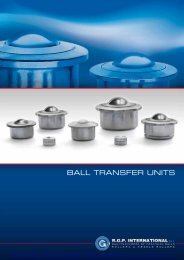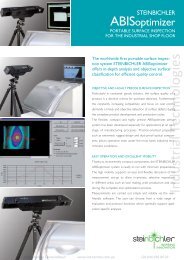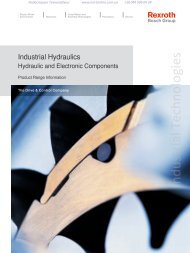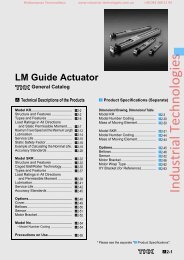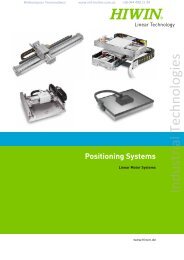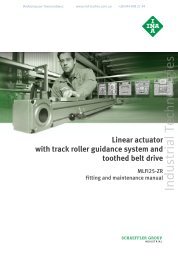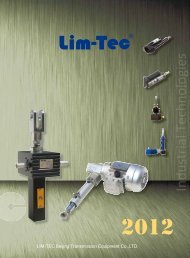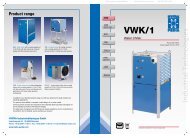LM Guide THK - Industrial Technologies
LM Guide THK - Industrial Technologies
LM Guide THK - Industrial Technologies
You also want an ePaper? Increase the reach of your titles
YUMPU automatically turns print PDFs into web optimized ePapers that Google loves.
Индастриал Технолоджис www.industrial‐technologies.com.ua +38 044 498 21 94Point of SelectionCalculating the Applied LoadCalculating an Applied Load[Single-Axis Use]• Moment EquivalenceWhen the installation space for the <strong>LM</strong> <strong>Guide</strong> is limited, you may have to use only one <strong>LM</strong> block, ordouble <strong>LM</strong> blocks closely contacting with each other. In such a setting, the load distribution is not uniformand, as a result, an excessive load is applied in localized areas (i.e., both ends) as shown inFig.2. Continued use under such conditions may result in flaking in those areas, consequently shorteningthe service life. In such a case, calculate the actual load by multiplying the moment value byany one of the equivalent-moment factors specified in Table1 to Table9.<strong>LM</strong> railBall displacement lineFig.2 Ball Load when a Moment is AppliedAn equivalent-load equation applicable when a moment acts on an <strong>LM</strong> <strong>Guide</strong> is shown below.P = K•MMoment loadLoad distribution curveRows of balls under a loadP : Equivalent load per <strong>LM</strong> <strong>Guide</strong> (N)K : Equivalent moment factorM : Applied moment (N-mm)Maximum applied load on a ballMaximum ball deflectionMoment loadBalldisplacement lineRows of balls under a loadLoad distribution curve<strong>LM</strong> <strong>Guide</strong><strong>Industrial</strong> <strong>Technologies</strong>A1-51




